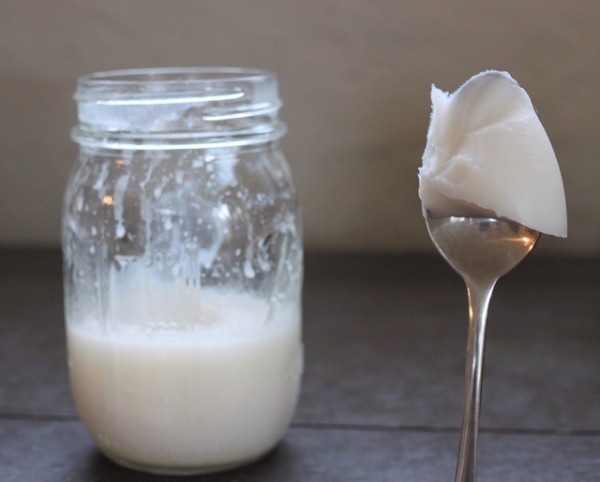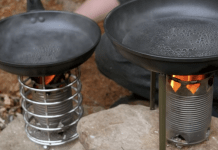You already have a pretty large range of food stashed away if you’re like most preppers. Anything from MREs and freeze-dried camping meals to sacks of bulk rice is in my own supply, there are hundreds of different products there. My guess is that your own stockpile, and that makes sense, is almost the same. A large variety of food will not only assist you after the SHTF to bring together nutritionally healthy meals, it will also make your diet more exciting and enjoyable.
What if you couldn’t, though, have all this variety? What if you could only stock, say, ten or twelve items? Then which ones would you pick? A couple of weeks ago, I read an article about this and had to think about it, and it was an interesting exercise. I learned in the process that it was more than just fascinating, though it could also be beneficial.
If, like many others, you build up your reserves by adding a few extra cans and packages to your shopping cart every week, it’s easy to go for variety. On the other hand, buying it in bulk is the cheapest and most convenient way to store food, and if you start doing so, you need to concentrate on fewer products unless money and space are not restricting factors (and, for most of us, they are).
If you select a few products and purchase them in bulk quantities, you can create a large stockpile faster and cheaper. You need to select the right things, of course, and it’s crucial to always have a healthy diet-the cheapest option of all would be to just order a few hundred-pound bags of rice, but that wouldn’t just get boring in a hurry; a lot of vital nutrients would still be missing.
On the other hand, you can also buy in bulk with a list of ten items and still have enough choices to put together a healthy diet. The article I was reading was trying to do this, but some food choices were, to say the least,… odd. It all made a lot of nutritional sense, but the main thing about a food source for survival is that it has to be healthy foods that you can store. It’s not renowned for its long shelf life, whatever you think of broccoli, so I wanted to make up my own list to see if, limited to only ten foods, I could do better. I suppose I did.
Related: How To Stockpile Lard, The Calorie Rich Survival Food Of The Great Depression
1. Sauerkraut
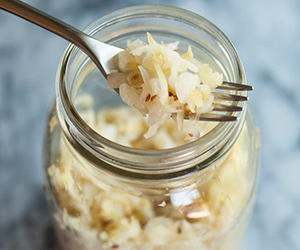

Green vegetables are difficult to store, and that can be an issue, as they are a good source of vitamin C and many other nutrients. Sauerkraut is my alternative. My grandmother made big batches of it every year when I was a boy; now my wife and I are making our own. Sauerkraut contains B, C and K vitamins; it is a good source of antioxidant, fiber, iron and many other minerals.
At least for several months, properly canned sauerkraut can last, but if you store it in a cool root cellar and do some simple food safety checks when you open the jar, my experience is that it is good at least for a couple of years. The ships lined barrels of it during the sailing days to protect the crew from scurvy on voyages that could last for years. A new batch of sauerkraut goes to the back on the shelf each year when we harvest the cabbages from our vegetable lot.
2. Jerky
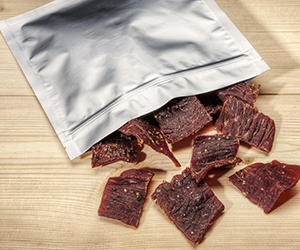

Personally, I would prefer not to get all my protein from plants, so meat would probably be one of my 10 things, and I’m going with jerky here for a few reasons. First, it’s lightweight and compact. Meat is up to 80 percent water by weight, so you can save a lot of pounds by dehydrating it. Secondly, if it’s dry enough and packaged properly, jerky will last a long time. Vacuum pack it with an oxygen absorber in mylar bags, and it should remain fine for years. Also, Jerky is flexible. To add protein and flavor, it can be soaked and added to soups, stews or other dishes, or it can be carried while you are on the move as a lightweight snack.
The one downside to jerky is that it’s costly to buy, but making your own is easy enough. All you need is a dehydrator, or a drying rack and a screen to keep insects away. I have a light wooden frame inside with racks and a door screen mesh covering; it allows air to circulate but protects the drying meat away from bugs.
3. Beans
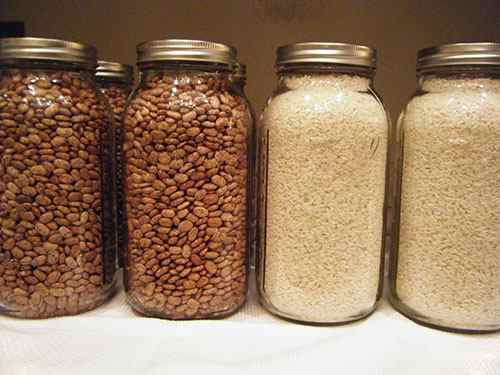

Dried beans are already a staple of the food reserves of most preppers. They can be stored for years, and allow you to make a wide range of dishes for filling. They’re great for making soups and stews in bulk. Beans are also a good source of fiber as well as protein, which is unusual for a vegetable.
Related: 50 Days of ‘Survival’ Calories with Rice and Beans
4. Rice
Rice, another prepper favorite, is the staple food for more than half of the human race. Rice makes up a fifth of all the calories eaten in the world. It’s a big source of carbohydrates, as you can probably guess from that, and a survival situation is not the place for a low-carb diet. Rice is just as versatile as beans, and it can be cooked in many ways. On top of that, you get a complete protein if you combine rice and beans. The combination contains all the amino acids your body needs.
5. Lard
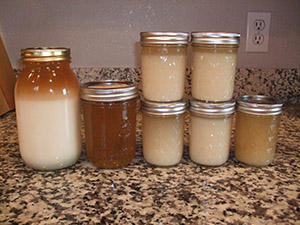

The issue for preppers is not whether to include fat in their food stores, which is a no-brainer, but what kind of fat to stockpile. Fat is an essential part of a healthy diet. There are arguments for canola or coconut oil, and I have those myself, but I think my preference of fat would be lard if I was limited to ten foods.
Lard is tasty, energy-packed and rich in essential fatty acids. Most people would say a few months without refrigeration, but the truth is that lard in a sealed jar can last for years. It can also be kept for a long time without going rancid. By rendering and straining pork fat, you can create your own lard, so if you keep pigs, there’s an obvious use for that belly fat.
6. Potato Flakes
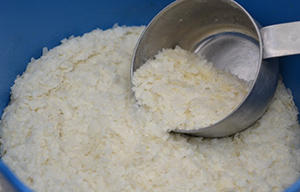

Potatoes are a terrific food for life. They are very high in carbohydrates, especially starch, which makes them a very useful energy source. Potatoes also contain a great deal of B6 and C vitamins. Unlike a lot of other vegetables, potatoes can also be preserved in a root cellar for a few months, or you can bury them in clamps in cold weather. You’re better off with dehydrated potato flakes for true long-term storage, though.
Potato flakes are only mashed boiled potato that has been crushed and dried. You will be given instant mashed potatoes by mixing them in boiling water; they can also be used for baking and thickening soups and stews. For less than $130, RealFoods will sell you 220 pounds of potato flakes, but I make my own; all you need to do is make mashed potato, without adding any milk or butter, then thinly spread it on sheets and place them in the dehydrator. Then I break up the dried potato sheets and give the flakes a couple of seconds in the blender and vacuum bag.
Related: How To Make Potato Flakes With 5 Years Shelf Life (without refrigeration)
7. Sugar
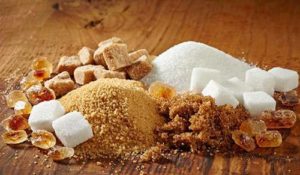

Diet nuts say that sugar is “empty calories,” but there is no such thing as an empty calorie when survival depends on your ability to do hard physical work; you want all the energy you can get. Sugar is simply pure energy, in a form that can be used quickly and efficiently by your body. To add energy to hot beverages and stewed fruit, use it. When someone is sick and has lost their appetite, a healthy way to get calories into them is sugar water.
8. Tomato Paste
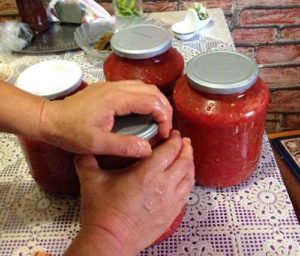

Nutritionally, tomatoes are pretty worthless. However, they add a lot of spice to meals, and if you don’t have anything to liven them up with, the sort of bulk foods on this list can get boring in a hurry. Tomato paste is a good way to make meals taste better, as well as salt and pepper, which I don’t count against my 10 (although salt is essential). This gives the pasta sauce a strong foundation and enhances the flavor of chillies, stews and plenty of soups. I think it’s worth adding tomato paste or dried onion chips to your cache, which are just as useless as a food but still good for flavor, even if it does not do a lot for nutrition.
In big cans, you can get tomato paste, but since you’re obviously not going to use much at a time, you risk losing a lot to spoilage. In tomatoes, the acid also decreases the shelf life of the cans. This is one time when you’re probably best off purchasing it in smaller tubes, but on multipacks you can save money. It costs about $12 for a pack of six 4.5-ounce tubes. Also, you can make your own.
9. Milk Powder
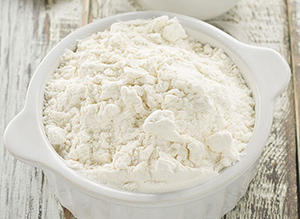

Another expensive thing is dry milk, and this is not one you can make without some costly machinery, so it’s a lot easier to buy it in bulk again.
10. Powdered Eggs
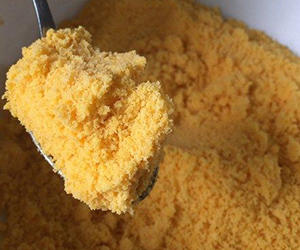

It’s not cheap to make whole egg powder, but you get tons of calories and protein for your money. At Augason Farms, a six-gallon tub costs around $200, or at Walmart, you can get four gallons for $115. You can even make your own if you have chickens and a dehydrator.
As I said, I have a lot more than ten things in my food reserve-more than anything else, this was a thought exercise. It did throw up some fine thoughts, though. If you could only stockpile ten food items, what would they be?



